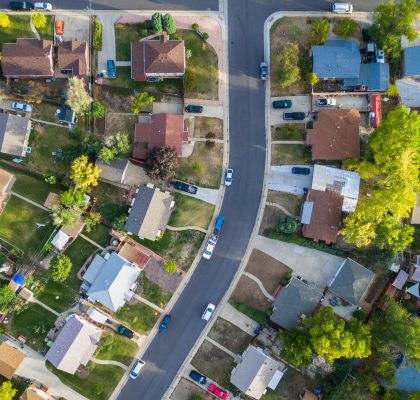Articles
Is It Time to Call Your Insurer?
Is It Time to Call Your Insurer?
Businesses today often face environmental liabilities that arise from certain transactions or activities that may have taken place decades ago. Some of these liabilities may simply occur as a result of business practices in existence before the enactment of environmental regulations.
Companies may now be subject to fines and enforcement actions due to recently discovered problems such as soil and groundwater contamination, asbestos, or leaking underground storage tanks. Companies that have had to deal with these environmental liabilities are intimately familiar with the severe financial consequences that are likely at stake.
The cost of cleaning up an environmental site for a responsible party can be as high as $100,000,000 or more. A frequently asked question has been whether there is a way to clean up the polluted site without going bankrupt.
Paying for Environmental Liabilities
Many businesses, including those in the adhesives and sealants industry, do not realize that they have insurance policies that may cover environmental liability, and that they may be entitled to defense and indemnification from their insurer. Commercial General Liability (CGL) insurance policies, which have seemingly expired, can often still be a source of coverage to satisfy environmental liability.
For example, a company may have sent waste to landfill X from 1968 to 1972. In 1996, the company receives a notice from the U.S. Environmental Protection Agency (EPA) that it is responsible for the costs of cleaning up landfill X. Since the company only recently discovered the occurrence of contamination at the site and the occurrence took place from 1968 to 1972, its liability policies covering the same period may provide a defense and indemnification.
Pollution Exclusion
One of the biggest potential obstacles to obtaining coverage from a CGL carrier is the introduction of a limited pollution exclusion in the policies beginning in 1970 and the move to an absolute pollution exclusion in 1986. The standard limited pollution exclusion states that:
“This insurance does not apply … (1) to bodily injury or property damage arising out of the discharge, dispersal, release or escape of smoke, vapors, soot, fumes, acids, alkalis, toxic chemicals, liquids or gases, waste materials, or other irritants, contaminants or pollutants into or upon land, the atmosphere, or any water course or body of water; but this exclusion does not apply if such discharge, dispersal, release or escape is sudden and accidental.”
This language attempts to exclude coverage for bodily injury or property damage caused by discharges, dispersals, escapes and releases except those that are “sudden and accidental” Of course, the question becomes what does “sudden and accidental” mean? Because these terms are not defined within the policy, a flood of litigation has resulted to determine the scope of the exclusion. This has created a myriad of interpretations.
The policyholder has generally argued that pollution that was unexpected or unintended is “sudden and accidental.” However, insurers have typically taken the position that the term “sudden and accidental” implies a temporal element, such that unless the polluting event is abrupt or short-lived, it cannot be said to be “sudden and accidental.”
Although courts have split on this question, even within the same jurisdiction, a recent Indiana Supreme Court decision provides new hope for CGL policyholders with environmental claims. On March 27, 1996, the Court in American States Insurance Co. vs. Kiger (2) found in favor of the policyholder on the definition of the “sudden and accidental” exception to the pollution exclusion, as well as the absolute pollution exclusion.
The case involved petroleum contamination that resulted from a leaking underground storage tank at the Kiger Sunoco gas station. The Indiana Department of Environmental Management spent more than $400,000 to dean up the site, sued Kiger to recover its cleanup costs and requested further remediation. Kiger, in turn, filed a claim with its CGL carrier, American States, which denied any duty to defend or indemnify on the basis of the limited pollution exclusion in its pre-1987 policies, and an absolute pollution exclusion in its post-1987 policies.
As to the limited pollution exclusion, the Court found that the terms were ambiguous, noting that the insurance industry itself had offered contradictory interpretations of the “sudden and accidental” policy language. Since the terms were found to be ambiguous, the Court construed the exclusion against the insurer and held that the pre-1987 insurance policies provided coverage for damage done by the discharge of gasoline.
As to the absolute pollution exclusion, the Court found it strange that an insurance company would sell a liability policy to a gas station when that policy specifically excluded the major source of potential liability. It also found that the exclusion’s definition of “pollutants” was so broad that, if read literally, it would preclude virtually all coverage:
“For example, if a visitor slips on a grease spill then, since grease is a ‘chemical,’ there would be no coverage. Accordingly this clause requires interpretation, we are particularly troubled by the interpretation offered by American States, as it makes it appear that Kiger was sold a policy that provided no coverage for a large segment of the gas station’s business operations…. In any event, since the term ‘pollutant’ does not obviously include gasoline and, accordingly, is ambiguous, we must once again construe the language against the insurer who drafted it. . . In this case, that requires that coverage for the gasoline contamination which occurred be available under the post-1987 policies.” (3)
This is an important decision for those who thought the absolute pollution exclusion was “absolute,” and lends new credence to these types of environmental claims.
Notifying Your Carrier
Another potential obstacle to coverage is the failure to comply with the conditions of the policy. A recent Illinois Appellate decision highlights the importance of notifying your insurance carrier of an environmental occurrence as soon as you receive information regarding an alleged incident that potentially might be covered under the insurance policy.
In Industrial Coatings Group, Inc., vs. American Motorists Insurance Co. (4), the insured was a manufacturer of window shades, industrial fabrics, and film extrusions and coatings. In 1986, the company was notified by the U.S. EPA that it was a potentially responsible party (PRP) under the Comprehensive Environmental Response, Compensation and Liability Act of 1980 (CERCLA), and that it would be potentially held responsible for the cost of investigation and cleanup at a site in Griffith, Ind., for the disposal of “spent” solvent. In April 1987, more than 14 months after it received the EPA letter, the insured gave written notice to the insurance company of an occurrence. After the carrier denied coverage, the insured filed suit.
The trial court found, and the appellate court affirmed, that the insured had a duty to notify the insurer in early 1986 following the EPA letter. The court stated:
“The key element of the duty to notify is the appearance to a reasonably prudent person that a claim potentially covered by the policy may be brought against the insured and not the appearance that the insured, in fact, may be liable.”
When the insured received the 1986 EPA letter, it knew that the site was contaminated, that it had sent waste to the site, that it had been designated as a PRP and that EPA was threatening it with liability for the contamination. Accordingly, the company had a duty to give notice after it received the EPA letter since it knew or should have known that the EPA letter created the potential for a claim to be brought against the insured. The court held that the insured was precluded from obtaining coverage due to the late notice, which was a breach of the conditions of the insurance contract.
In light of this recent decision, company risk managers or those responsible for insurance claims would be well advised to take prompt action when the company is aware of the potential for a claim to be made against it. It is always easier to notify the carrier of a potential claim, rather than to have to argue later that a delay in providing notice was reasonable.
For further information about notifying your carrier of an environmental occurrence, or about the availability of environmental insurance coverage for your environmental liabilities, call us at 312-407-7888.
References
1 1SO 1973 CGL Policy.
2 No. 32S05-9409-CV-00836 (Indiana S. Ct. March 27, 1996).
3 Slip Op. at 8-9.
4 658 N.E.2d 1338 (1995).




